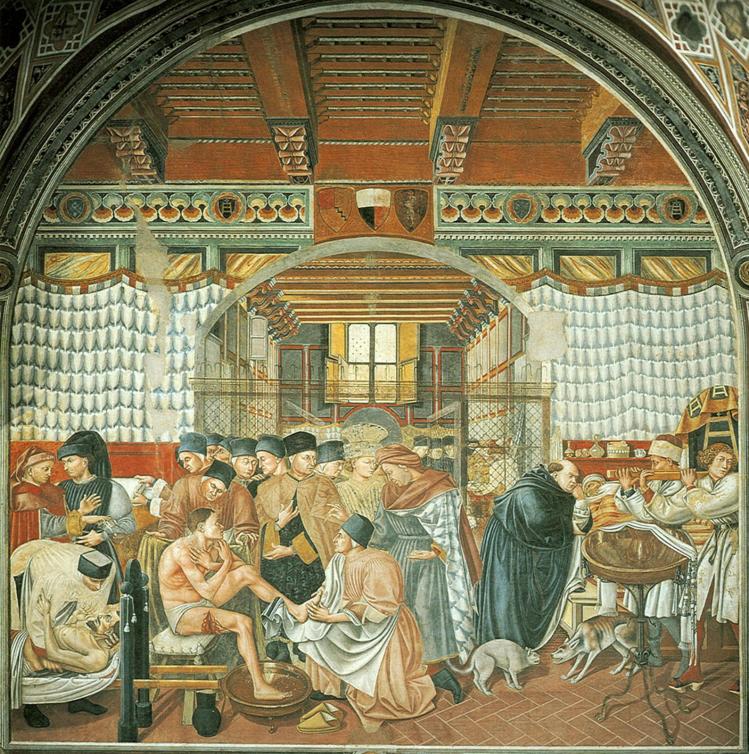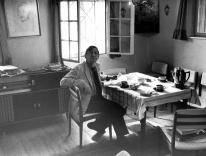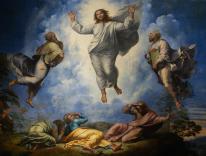
I was introduced to death at the age of five in the home of my great aunts, Elizabeth and Gertrude, who lived across the street from my family. My mother dressed me up one day and walked me over to visit the two single sisters in their eighties, who had opened their home to my mother and me for endless afternoons of tea. I remember walking into their home that day and noticing how dark and solemn it was. As my mother and I turned the corner from the entranceway into the living room, I saw Gertrude’s fragile body lying peacefully in a large, cushioned box just inside the bay window. All I remember after that is sitting on a dark velvet sofa and turning to a woman sitting beside me, whom I mistook for my mother, and saying, “It looks just like church!” My mother overheard me from across the room and gently shushed me.
The next year, when I was six, my younger sister, Kathleen, died not long after her birth. I remember my mother’s convulsive grief following her stay in the hospital, which was at the end of our street. The connection between a baby’s death and my mother’s sadness was too abstract for me to understand at the time, but my mother experienced it as an unspeakably painful rupture. The quick trip from crib to coffin was too much for her to bear.
Two years later my mother had another baby girl, her fifth daughter and eighth child. My parents named her Kathleen, too. It was as if I always had two sisters named Kathleen: the one who lived as a shadow of grief and the one who flourished as a gift of grace. One sister brought my mother inconsolable sadness, and the other periods of great joy. The darkness of my sister’s death hovered over my family like a shadow reminding us of our mortality. I could never escape the fierce reality that we live but we also die. As Jesus said, we “know neither the day nor the hour.” We just know it is coming.
As a class officer at my Catholic high school, one of my responsibilities was to represent my class at any wakes and funerals associated with anyone at the school. My father, a public-school principal in the City of Worcester, held the same responsibility for his school. Together, my father and I attended countless wakes and funerals over the years. Without knowing it, my father taught me how to comport myself in an environment where grief is the order of the day and a dead body is near. One of the blessings of this experience is that I learned the great landmarks of a person’s life are the people they loved.
In April 2014, my eldest brother, Brian, who lived with quadriplegia for twenty years, received the sacrament of the sick at the University of Massachusetts Medical Center. This was the signal that he was on the runway to death. The progressive effects of muscular dystrophy, a disease that has ravaged so many lives—including those of a younger sister and brother—were too great to stave off any longer. With my family surrounding my brother, the hospital chaplain, a Catholic priest, blessed Brian with oil, prayed over him, and, at my request, absolved all of us for any sufferings we may have caused my brother. My request stemmed mostly from my father’s inability over many years to accept my brother for who he was and had always been: a beloved child of a merciful God. Indoctrinated in the old church, my father was raised to associate a sickness of this magnitude with some kind of moral failing. To my father, a ravaged body manifests a lack of right relationship with God. Someone must be to blame. The roster of the accused is long and devastating: self, spouse, parent, grandparent, child, God himself. Who is responsible for this calamity?
My brother died twelve weeks after he received the sacrament. I was given the responsibility of telling my father, who did not hear well and was living in a skilled nursing facility. I remember having to say several times, with increasing volume, “Dad, Brian died.” When my father finally understood, he reacted volcanically: cries pierced the late-afternoon solitude of the activity room.
Four years later, I was again responsible for telling my father of a death—this time my mother’s. I bent down to tell him, but the words were lodged behind an avalanche of grief rising in my throat. I tried several times to speak, but no sound came out of my mouth. My tears forced me to surrender the task of announcing her death. A nurse, standing beside me, said to my father, “Helen has passed away.” His grief was immediate and torrential. Two months later, my father died.
I continue to be surrounded by death as a chaplain working at a large urban hospital that serves patients from all over the world. The hospital staff bears witness to the full arc of human suffering. Every day, doctors, nurses, coordinators, therapists, and chaplains don their compassion-coated armor to tend to the wounds of body and soul. Amidst patients who are recovering from strokes, burns, heart attacks, sepsis, tumors, and every imaginable permutation of disease, I am frequently paged to attend to a patient approaching the final threshold of life: a fifty-seven-year-old cardiac surgeon dying of metastatic colon cancer, a twenty-three-year-old college student struck by a truck, a forty-six-year-old father felled by a broken neck. Our patients’ pain is many-layered and their loneliness acute. Yet within the mystery of all this suffering, I experience glimpses of the Resurrection: people from all walks of life coming together to help those in need. So many of us—strangers helping strangers—come to see the world anew. Tending to trauma has created a resilient village where the deeply afflicted and we who accompany them transform heart-rending sadness into courage, hope, and joy. By coming together in a spirit of compassion and love, each of us—worker and patient alike—enables hope to take root. Whether it is hope for recovery or hope for peace in eternal life, it is hope that propels, consoles, and uplifts.
As I witness the endless procession of lives marching toward the heavenly banquet, I have come to embrace Death as a wise taskmaster and occasional friend. Its presence, sometimes welcomed and sometimes not, means life is changed, but not ended. Death has taught me that each of our lives is a thread in a consecrated tapestry of divine love entwined with sorrow and hope—a tapestry that survives our bodily surrender and endures forever.
Please email comments to [email protected] and join the conversation on our Facebook page.
Share
Previous Story
Friend, Colleague, Teacher
Next Story
Pope Francis’s Vision for the Church

